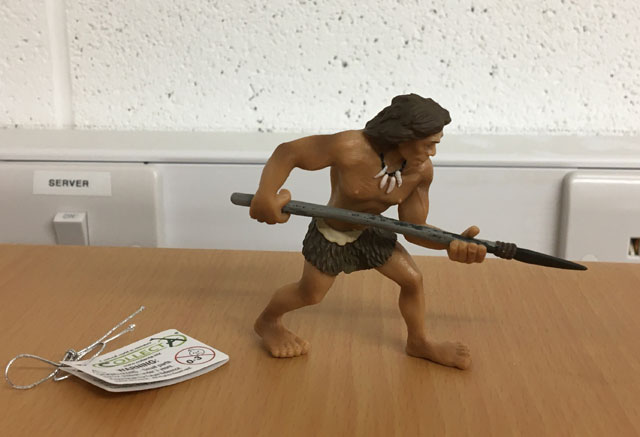New Study Indicates much more Varied Diet for Neanderthals
The image of a brutish Neanderthal, armed with a primitive club and barely able to string together a series of grunts as a form of language has largely been dispelled. Recent studies have changed dramatically our understanding and the subsequent image of the Neanderthal. These people were sophisticated and very well adapted to the harsh climate of Europe back in the Pleistocene. Their brains may actually have been bigger than our own (certainly in cubic volume terms).
However, one of the main differences between H. neanderthalensis and our own species, H. sapiens was thought to concern diet. It had been suggested that Neanderthals consumed a lot more meat than us. They were portrayed as being almost totally carnivorous. Their dependence on large animals to hunt, creatures such as the Woolly Mammoth was thought to have made this particular species of human more vulnerable to extinction. Once the large mammals died out, the Neanderthals would have gone too.
Neanderthals
A new study, published in the scientific journal “The Proceedings of the National Academy of Sciences”, shows that Neanderthal diet was far more sophisticated than previously thought, and on a par with our own species.
There have been a number of papers published this year demonstrating how closely the Neanderthals were to our species. A scientific paper, released this spring, investigated the origin of what we call “human emotions”, to read more about this: The Origins of Human Empathy.
The revision of Neanderthal dietary habits has come about after an extensive study of their fossilised teeth. Analysis of microscopic food particles trapped in Neanderthal teeth reveal evidence of a rich and varied diet, indicating that Neanderthals were able to exploit a variety of food resources.
A Model of a Neanderthal Man

Selecting a CollectA Neanderthal man figure for an Everything Dinosaur customer. Picture credit: Everything Dinosaur.
Picture credit: Everything Dinosaur
To view replicas of Neanderthals (whilst stocks last), and other prehistoric animal figures: CollectA Prehistoric Life Models and Figures.
The study reveals that Neanderthals ate a wide range of vegetables and pulses, such as wild grasses, beans, roots, tubers and date palms. Much of the material studied confirms that Neanderthals cooked their food. Cooking allows foods to be digested more easily and permits more nutrients to be extracted – perhaps each family group had their own favourite recipes.
The evidence, collated from a number of Neanderthal fossil sites, including cave sites in Iraq and Belgium suggest that Neanderthals controlled fire and ate a variety of food stuffs.
Commenting on the study, a spokesperson for the researchers stated:
“Our results… suggest an overall sophistication in Neanderthal dietary regimes.”






Leave A Comment